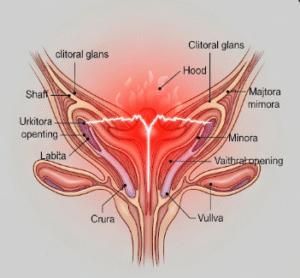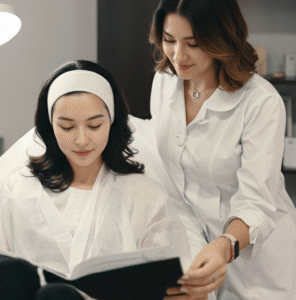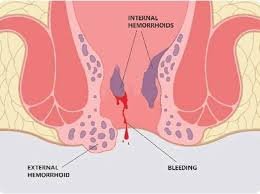When people think of Korean beauty, they often imagine glass-like, glowing skin and flawless complexions. While skincare products play a big role, there’s another secret that fuels this radiance from the inside out — the Korean diet. Rooted in centuries of tradition and backed by modern nutritional science, Korean cuisine offers a powerful blend of antioxidants, probiotics, vitamins, and hydration, all essential for maintaining healthy skin.
The Korean Approach to Skin Health
Koreans believe that beautiful skin starts from within. Instead of focusing only on external care, diet and lifestyle are viewed as part of holistic skincare. A balanced Korean diet supports the body’s natural ability to repair, detoxify, and rejuvenate the skin.
➡️ Core principles of the Korean nutrition philosophy:
• Balance is key: Every meal includes a mix of grains, vegetables, proteins, and fermented foods.
• Natural over processed: Fresh ingredients are preferred over artificial additives.
• Hydration and harmony: Soups, teas, and water-rich foods help maintain skin moisture.
• Food as prevention: Many Korean dishes are designed to strengthen immunity and reduce inflammation.
✅ Scientific fact: Chronic inflammation and poor gut health are major causes of premature aging and dull skin. The Korean diet naturally combats both through nutrient-dense, anti-inflammatory foods.
The Role of Fermented Foods
Fermentation is one of the cornerstones of Korean cuisine, offering powerful benefits for both gut and skin health. Foods like kimchi, doenjang (fermented soybean paste), and gochujang (fermented chili paste) are packed with probiotics that support digestion and improve nutrient absorption.
➡️ Benefits of fermented foods for skin:
• Balances gut microbiome: A healthy gut reduces inflammation that causes acne and redness.
• Improves nutrient absorption: Ensures vitamins and minerals reach skin cells effectively.
• Boosts immunity: Strengthens the body’s defense against oxidative stress and pollutants.
• Promotes detoxification: Helps remove toxins that can lead to breakouts or dull skin.
💡 Fun fact: Studies from Seoul National University show that regular kimchi consumption increases the diversity of gut bacteria, which directly correlates with clearer, more resilient skin.
Antioxidants: The Korean Secret Weapon
The Korean diet is rich in antioxidants, compounds that fight free radicals and slow skin aging. Antioxidants protect collagen, prevent wrinkles, and maintain elasticity.
➡️ Antioxidant-rich foods commonly found in Korean meals:
• Green tea: High in catechins that protect against UV damage.
• Seaweed: Packed with vitamins A, C, and E — vital for collagen synthesis.
• Berries (like omija and bokbunja): Help brighten the skin and reduce pigmentation.
• Garlic and ginger: Improve blood circulation and detoxify the body.
• Sweet potatoes: Contain beta-carotene, which the body converts into skin-protecting vitamin A.
✅ Scientific insight: Regular intake of antioxidants helps neutralize oxidative stress, keeping the skin firm and youthful.
Hydration from the Inside Out
Korean cuisine naturally keeps the body hydrated. Soups, stews, and water-rich vegetables are staples in almost every meal, ensuring consistent internal moisture.
➡️ Hydrating elements in the Korean diet:
• Soups and broths (guk, jjigae): Restore electrolytes and hydrate the skin.
• Cucumber and radish: Contain over 90% water and support detoxification.
• Barley tea (bori-cha): Improves digestion and provides minerals for balanced hydration.
• Watermelon and pears: Common snacks during summer that cool and moisturize from within.
💧 Result: Consistent hydration reduces flakiness, dullness, and fine lines — making the skin look naturally “dewy.”
The Power of Omega Fatty Acids and Proteins
Protein and healthy fats are crucial for cell repair and elasticity. Koreans include many natural sources of omega-3 and omega-6 fatty acids in their diet, which nourish the skin barrier.
➡️ Common skin-boosting sources:
• Fish (mackerel, salmon, sardines): Promote collagen production and reduce inflammation.
• Tofu and soybeans: Provide plant-based protein for tissue repair.
• Sesame seeds and oils: Contain vitamin E and antioxidants that protect skin cells.
• Eggs: Rich in biotin and amino acids essential for smooth, firm skin.
✅ Scientific support: Omega fatty acids strengthen the lipid layer of the skin, preventing dehydration and maintaining elasticity.
Vitamins and Minerals for Radiant Skin
Korean meals are designed to be nutrient-rich without being heavy. The focus on variety ensures that the skin receives all the vitamins and minerals it needs to stay strong and radiant.
➡️ Key nutrients found in Korean dishes:
• Vitamin C: Found in fruits like tangerines and kiwi, helps in collagen synthesis.
• Vitamin A: Present in carrots, spinach, and peppers — essential for cell regeneration.
• Zinc: Found in seafood and beans, crucial for healing and oil balance.
• Iron: From leafy greens and clams, supports oxygen supply to skin tissues.
• Selenium: From garlic and brown rice, defends against oxidative damage.
🌿 Takeaway: Each ingredient contributes to better skin health, making the Korean diet naturally functional and therapeutic.
The Gut-Skin Connection
Modern Korean research has shown a strong connection between gut health and skin condition. A balanced gut microbiome leads to reduced acne, eczema, and premature aging.
➡️ Korean diet practices that enhance gut-skin harmony:
• Daily consumption of probiotic-rich foods like kimchi or yogurt.
• Limited use of processed sugar, which feeds harmful gut bacteria.
• High fiber intake from vegetables and grains to support digestion.
• Herbal teas that reduce inflammation and support liver detoxification.
✅ Scientific evidence: Studies indicate that improving gut flora can reduce acne lesions by up to 40% and improve skin moisture levels within weeks.
Herbal and Traditional Korean Remedies
Korean herbal medicine, known as “hanbang,” plays a crucial role in skin wellness. These natural ingredients are not only used in skincare products but also consumed as part of the diet.
➡️ Popular skin-supporting herbs:
• Ginseng: Enhances collagen and improves blood flow to the skin.
• Licorice root: Reduces pigmentation and soothes irritation.
• Schisandra (omija): Detoxifies and protects against environmental stress.
• Angelica root (danggui): Promotes cell renewal and brightens skin tone.
💡 Real-world effect: Many Koreans drink herbal tonics or teas to rejuvenate the body, making the skin appear brighter and more youthful naturally.
The Korean Way of Eating
It’s not just what Koreans eat, but how they eat that matters. Mindful eating is considered a key to better digestion and nutrient absorption.
➡️ Everyday healthy habits:
• Eating slowly to aid digestion and prevent bloating.
• Consuming smaller portions throughout the day for steady energy.
• Including side dishes (banchan) full of vegetables and fermented items.
• Avoiding late-night meals to reduce toxin buildup.
🥢 Philosophy: Meals are viewed as a moment of care and balance — a form of wellness that shows directly on the skin.
Final Thoughts
The glow of Korean skin isn’t achieved by products alone; it’s deeply connected to diet, culture, and balance. Through centuries of culinary wisdom and modern research, Korea has mastered the link between nutrition and skin vitality.
The traditional Korean diet — rich in fermented foods, antioxidants, omega fats, vitamins, and hydration — offers a blueprint for long-lasting skin health. By nurturing your body with these nutrient-packed meals, you’re also feeding your skin with the strength and glow it needs.
✨ In short: Healthy skin begins at the table — and the Korean way of eating proves that true beauty starts from within.












